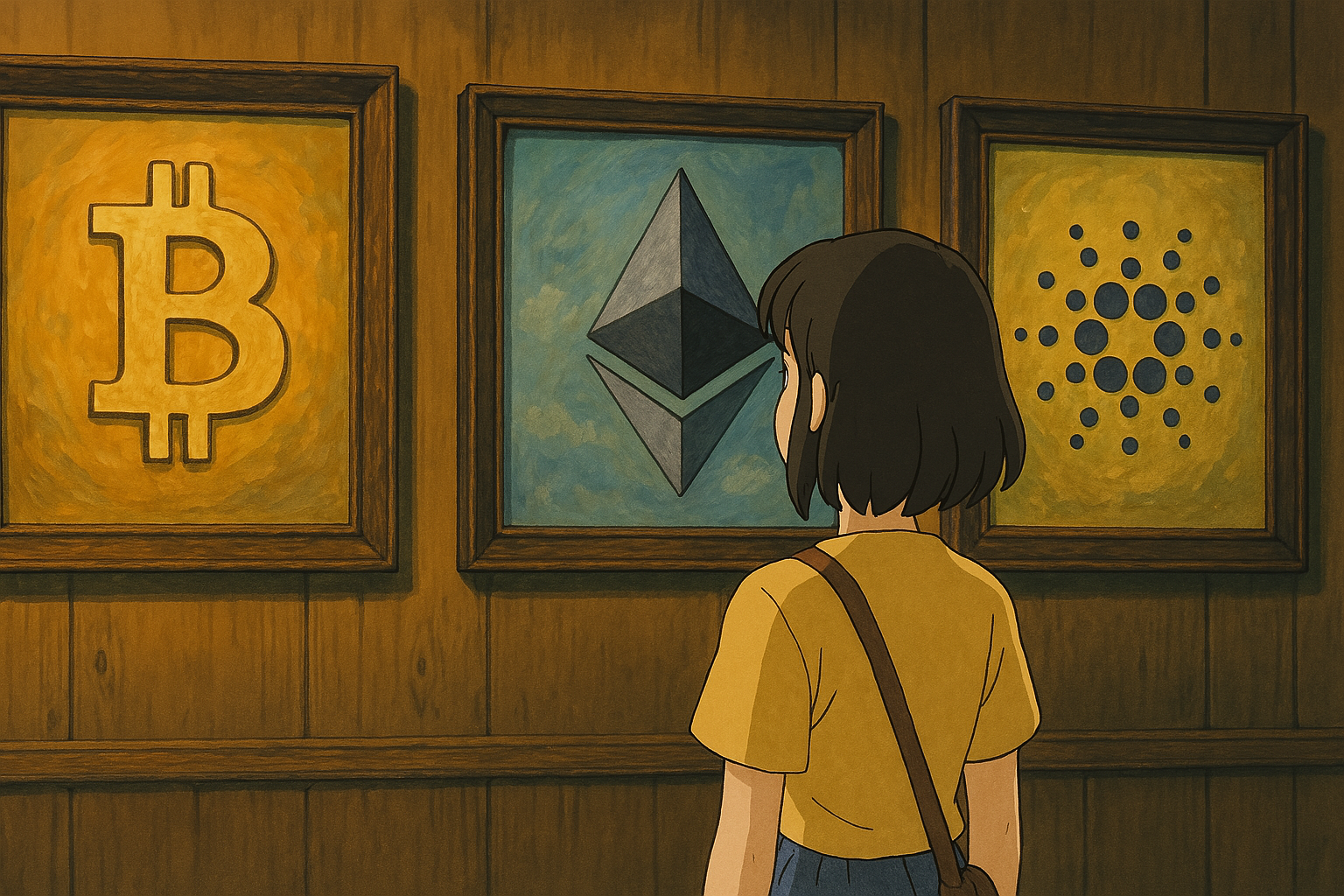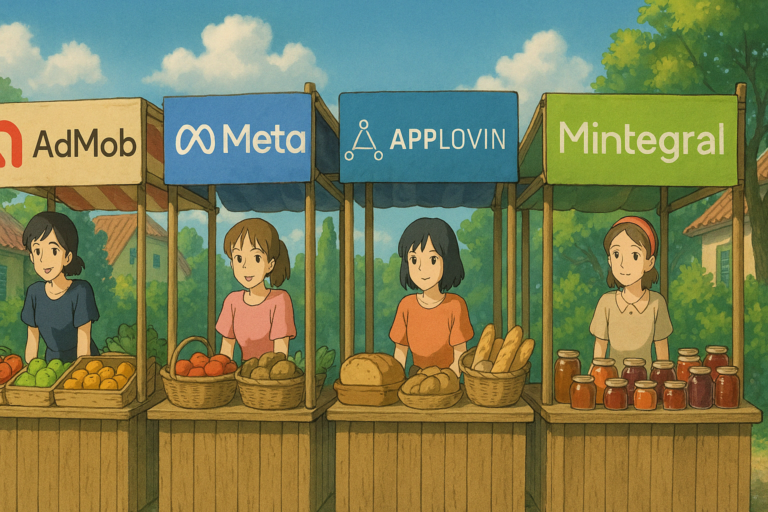Top Crypto Tokens with High Long-Term Growth Potential
Introduction
In this report, we highlight a selection of cryptocurrency tokens currently priced below $100 that show strong long-term growth potential. These projects were chosen based on their active communities, solid utility or innovative technology, and sound fundamentals at current market valuations. We avoided meme coins or low-quality speculative tokens, focusing instead on well-established and promising newer projects that have fair entry prices. Below is a comparison table for a quick overview, followed by detailed profiles of each token including their sector, strengths, community/developer activity, and key resources.
Disclaimer: this is not direct investment advice, and investing in crypto is risky.
Comparison Table of Selected Tokens
| Project (Ticker) | Sector / Category | Key Strengths / Use Case |
|---|---|---|
| Cardano (ADA) | Layer-1 Smart Contracts | Research-driven PoS blockchain; high dev. activity; large ecosystem |
| Polkadot (DOT) | Multichain / Interoperability (Layer-0) | Connects multiple blockchains (parachains); shared security; top dev. ecosystem |
| Avalanche (AVAX) | Layer-1 Smart Contracts | High-speed consensus (sub-second finality); scalable via subnets; >4,000 TPS theoretical |
| Polygon (MATIC) | Ethereum Scaling (Layer-2) | Popular Layer-2/sidechain for low-cost Ethereum transactions; extensive real-world partnerships (Disney, Meta, Starbucks, etc.) |
| Cosmos (ATOM) | Interchain Ecosystem | “Internet of Blockchains” with Cosmos SDK and IBC; many independent chains built on it (e.g. BNB Chain, Terra) |
| Chainlink (LINK) | Decentralized Oracle | Leading oracle network feeding real-world data to smart contracts; 2,500+ integrations across crypto |
| Uniswap (UNI) | Decentralized Exchange (DeFi) | Largest DEX protocol (AMM model); >$2 trillion all-time trading volume; key DeFi infrastructure |
| Arbitrum (ARB) | Ethereum Layer-2 Rollup | Most widely-used Ethereum rollup (Optimistic L2); ~41% of Layer-2 market TVL; low fees & lively DeFi ecosystem |
| Artificial Superintelligence (ASI) formerly Fetch.ai (FET) | AI & Web3 Infrastructure | Alliance token merging Fetch.ai, SingularityNET, and Ocean Protocol for decentralized AI; pools AI expertise & resources |
| Filecoin (FIL) | Decentralized Storage | Peer-to-peer cloud storage network (uses IPFS); massive storage capacity (~7.8 exabytes) globally |
| XRP (XRP) | Payments & Settlements | Fast, low-cost transactions for cross-border payments; adopted in Ripple’s ODL with ~$15B processed (2024) |
Prices are approximate as of April 2025. Each project’s official website and additional exchange listings are provided in the detailed sections below.
Cardano (ADA) – Layer-1 Smart Contract Platform
Current Price: ~$0.62 (USD)
Sector/Category: Layer-1 blockchain (Proof-of-Stake smart contract platform)
Key Strengths & Use Case: Cardano is a third-generation blockchain aiming to deliver scalability, security, and sustainability through a rigorous academic approach. It uses a peer-reviewed, research-driven development process and the Ouroboros PoS consensus protocol. Cardano enables smart contracts and decentralized applications (via its Plutus platform) while prioritizing formal verification for high assurance software. This methodical development has led to features like improved interoperability and plans for scalability with Hydra (layer-2) in the pipeline, making Cardano suitable for DeFi, identity management, supply chain tracking, and other use cases that demand reliability and security.
Community & Developer Activity: Cardano has one of the most active communities and developer ecosystems in crypto. It consistently ranks among the top projects by developer activity – for example, Cardano recorded over 600 notable GitHub commits in a month, often placing it at #1 for development activity ahead of other networks (cryptorank.io). The network’s community is large and global; there are over 4.3 million ADA wallets and 1.2k+ projects building on Cardano as of 2025 (emurgo.io). This vibrant community (sometimes dubbed the “ADA Army”) and the strong developer engagement (449+ monthly active devs reported) help drive Cardano’s long-term growth. The project’s governance is moving towards full decentralization with Voltaire (on-chain governance), which will further empower its community.
Official Website: cardano.org
Main Exchanges: Binance, Coinbase, Kraken, Bitfinex, and most major exchanges support ADA trading.
Polkadot (DOT) – Multichain Interoperability Network
Current Price: ~$3.5 (USD)
Sector/Category: Layer-0 multichain network (interoperability and shared security)
Key Strengths & Use Case: Polkadot is a platform that connects multiple specialized blockchains into one unified network. Founded by Ethereum co-founder Dr. Gavin Wood, Polkadot introduces an innovative parachain architecture: independent blockchains (“parachains”) can run in parallel, all secured by the central Relay Chain. This design provides interoperability (cross-chain communication) and shared security across chains. Polkadot’s use case is enabling a web of heterogeneous blockchains – for example, a DeFi chain, an identity chain, and a smart contract chain can all operate under Polkadot and seamlessly exchange information. This makes it ideal for scaling the blockchain ecosystem and supporting specialized chains that benefit from Polkadot’s security and interoperability. The network’s on-chain governance and forkless upgrade (via runtime upgrades) mechanism are also key innovations, allowing DOT holders and validators to steer network evolution without disruptive hard forks.
Community & Developer Activity: Polkadot boasts a very strong developer and supporter community. It has one of the largest developer ecosystems in crypto – according to Electric Capital’s 2023 report, Polkadot had about 792 full-time developers, second only to Ethereum(bitget.com). In total, over 2,000 developers contribute across Polkadot and its ecosystem (including the Kusama canary network), reflecting massive building activity. Dozens of parachains have launched via crowdloans, indicating broad community participation in funding new parachain projects. DOT token holders are highly engaged in governance proposals and staking (over 50% of DOT is staked for network security). With Web3 Foundation support and grants, Polkadot’s developer community continues to grow, and its long-term roadmap (as well as the success of parachains in DeFi, gaming, identity, etc.) underpins optimism for Polkadot’s growth.
Official Website: polkadot.network
Main Exchanges: Binance, Coinbase, Kraken, Huobi, and others (widely listed as a top 20 crypto asset).
Avalanche (AVAX) – High-Performance Layer-1 Network
Current Price: ~$19 (USD)
Sector/Category: Layer-1 smart contract platform (high throughput)
Key Strengths & Use Case: Avalanche is a blockchain known for its very high performance and unique consensus mechanism. It achieves near-instant finality (often under 2 seconds) and has demonstrated the ability to handle thousands of transactions per second in ideal conditions. In fact, Avalanche’s developers have claimed throughput up to ~4,500 TPS in theory (coinpaper.com), thanks to its Avalanche consensus protocol which uses repeated subsampled voting for speed without sacrificing decentralization. The platform’s architecture comprises three built-in chains (X-Chain for asset transactions, C-Chain for EVM smart contracts, and P-Chain for metadata and validator coordination) to optimize for different tasks. Avalanche’s flagship feature is “subnets” – custom, interoperable blockchains that can be launched on Avalanche and benefit from its fast consensus. This makes Avalanche ideal for enterprises or communities needing their own blockchain with custom rules while still being part of a larger network. Use cases include DeFi (Avalanche hosts many dApps and a thriving DeFi ecosystem), NFTs/collectibles, gaming (several game-specific subnets exist), and institutional use cases (e.g., regulated asset markets) that require high throughput and fast settlement.
Community & Developer Activity: Avalanche has a strong community of users and developers attracted by its tech. The developer community has built hundreds of dApps and tools, and Avalanche’s compatibility with Ethereum (via the C-Chain’s EVM support) makes it easy for Solidity developers to deploy or port over projects. The Avalanche Foundation’s incentives (like Avalanche Rush for DeFi) helped bootstrap a robust DeFi community (e.g., popular DEXes like Trader Joe started on Avalanche). Additionally, many projects leverage subnets, indicating a growing ecosystem of application-specific chains (for example, DeFi Kingdoms moved to an Avalanche subnet). Avalanche’s community is active in governance (AVAX staking and validator discussions) and in promoting the network’s capabilities for new applications. With partnerships (e.g., collaborations with Deloitte for disaster-recovery platforms) and continuous protocol upgrades, Avalanche’s ecosystem remains lively. Its high performance and adaptability (through subnets) give it solid long-term prospects as blockchain adoption grows.
Official Website: avax.network
Main Exchanges: Binance, Coinbase, Kraken, KuCoin, Bitstamp, and others.
Polygon (MATIC) – Ethereum Layer-2 Scaling Solution
Current Price: ~$0.51 (USD)
Sector/Category: Ethereum scaling / Layer-2 (sidechain & rollups)
Key Strengths & Use Case: Polygon is a platform providing scalable, low-cost infrastructure for Ethereum. Initially launched as Matic Network (a Plasma sidechain), Polygon has evolved into a multi-solution Layer-2 ecosystem. Its primary PoS chain (often just called Polygon) acts as an Ethereum sidechain, offering much lower fees and faster transactions while using a framework that finalizes checkpoints on Ethereum for security. Polygon is also actively developing cutting-edge solutions like Polygon zkEVM, a zero-knowledge rollup fully compatible with Ethereum smart contracts, to further enhance throughput and security. The core use case of Polygon is to offload transaction load from Ethereum Mainnet, enabling dApps (decentralized apps) to achieve high performance and user-friendly fees. This has made Polygon extremely popular for DeFi protocols, NFT marketplaces, blockchain gaming, and metaverse projects that need to serve mass users without prohibitive gas costs.
Community & Adoption: Polygon has a massive and active ecosystem, bolstered by strong partnerships with mainstream companies. It has become the go-to network for many big brands dipping into Web3. For instance, companies like Disney, Meta (Facebook), Nike, Adidas, Reddit, Starbucks, and Adobe have all partnered with or built on Polygon (medium.com). These collaborations range from NFT collectibles (Reddit’s collectible avatars on Polygon, Nike’s Cryptokicks), to loyalty programs (Starbucks Odyssey NFTs), to integrating Polygon for social media digital asset features (Meta’s Instagram pilot for NFTs). Such partnerships significantly broaden Polygon’s user base and credibility. On the developer side, Polygon’s EVM-compatibility means it’s easy for Ethereum developers to deploy contracts, resulting in hundreds of dApps spanning the spectrum of DeFi (Aave, Uniswap, etc. deployed on Polygon), gaming (e.g., Sandbox’s assets bridged to Polygon), and more. The community of MATIC token holders also actively participates in governance of the Polygon ecosystem and staking. Polygon’s strategy of improving Ethereum’s usability and its ambitious tech roadmap (including multiple ZK rollups and even Polygon Supernets for enterprise chains) suggest continued growth. Its strong network effects (with both crypto-native and enterprise adoption) position Polygon as a key long-term player for scaling blockchain usage.
Official Website: polygon.technology
Main Exchanges: Binance, Coinbase, FTX, Kraken, and most major exchanges (MATIC is a top 15-20 crypto by market cap).
Cosmos (ATOM) – Internet of Blockchains
Current Price: ~$4.2 (USD)
Sector/Category: Interchain network (Layer-0 protocol & ecosystem of independent chains)
Key Strengths & Use Case: Cosmos is often described as the “Internet of Blockchains.” Rather than a single monolithic blockchain, Cosmos provides a framework (the Cosmos SDK and Tendermint consensus engine) for building sovereign application-specific blockchains that can interoperate. Each blockchain in the Cosmos ecosystem (called a “zone”) is independent – it can have its own tokens, governance, and optimization for specific use cases – but they can connect through the Inter-Blockchain Communication (IBC) protocol. The Cosmos Hub (whose native token is ATOM) was the first zone and serves as a routing hub for others. The use case for Cosmos is enabling a universe of specialized blockchains (for DeFi, gaming, social, etc.) that can seamlessly transfer assets and data between each other, overcoming the siloed nature of early blockchains. This architecture addresses scalability by spreading load across many chains and allows flexibility (each chain can upgrade or govern itself). Many notable networks have been built with Cosmos tech – for example, Binance Chain, Terra, Crypto.org Chain, and OKX Chain were all built using the Cosmos SDK, showcasing the framework’s popularity (cosmos.network).
Community & Developer Activity: Cosmos has a strong developer community, particularly among those building new Layer-1 chains. The Cosmos SDK is one of the most widely used blockchain development toolkits; according to coingecko data, 4 of the top 20 blockchains by market cap were built with Cosmos SDK (cosmos.network). This means a lot of developers are indirectly part of the Cosmos ecosystem. The launch of the IBC in 2021 catalyzed a growing community of interconnected zones (e.g., Osmosis for DEX, Axelar for bridging, Juno for smart contracts, etc.). ATOM holders and stakers form the core community for the Cosmos Hub, participating in governance proposals that shape the Hub’s evolution (like the recent discussions around ATOM 2.0 economic changes). While Cosmos’s structure means each zone has its own community, the overall ethos of interoperability and open-source development unites them. Developer activity is robust – Cosmos consistently ranks among top ecosystems by number of monthly developers. The introduction of CosmWasm (a smart contract module) and interchain accounts is spurring more dApp development on Cosmos-based chains. The community is also active in events like HackAtom hackathons and forums to improve cross-chain standards. In summary, Cosmos’s collaborative and modular approach, combined with a passionate community of builders, gives it strong fundamentals for long-term growth as the demand for interconnected blockchains rises.
Official Website: cosmos.network
Main Exchanges: Binance, Coinbase, Kraken, Bitfinex, and others (ATOM is widely traded).
Chainlink (LINK) – Decentralized Oracle Network
Current Price: ~$12.6 (USD)
Sector/Category: Blockchain Oracle and Middleware
Key Strengths & Use Case: Chainlink is the leading decentralized oracle network, which serves as critical infrastructure for smart contracts. Blockchains themselves cannot access external data (like market prices, weather, events) without help – Chainlink fills this gap by providing reliable data feeds and APIs to smart contracts in a decentralized manner. Its most famous product is the Chainlink Data Feeds, used extensively in DeFi to get price oracles (for example, virtually all major DeFi protocols like Aave, Synthetix, and Compound rely on Chainlink oracles for price data to secure loans and derivatives). Chainlink’s design uses a network of independent node operators that fetch and aggregate data, ensuring no single point of failure. The LINK token is used to pay node operators and stake in the system (with Chainlink 2.0 introducing staking for security). Beyond price feeds, Chainlink also offers randomness oracles (VRF for gaming/NFTs), Proof-of-Reserve feeds (for verifying asset reserves), and is rolling out Cross-Chain Interoperability Protocol (CCIP) for messaging between blockchains. Essentially, Chainlink’s use case is to connect on-chain smart contracts with any off-chain resource securely – making previously impossible smart contract applications (like crop insurance triggered by weather data, or cross-chain token transfers) feasible.
Community & Developer Activity: Chainlink has a very strong and dedicated community often referred to as “Link Marines.” Its adoption is widespread across the crypto industry, which is reflected in the ecosystem metrics – as of 2024, over 2,500 integrations (projects and decentralized applications) have incorporated Chainlink services (cryptopolitan.com). This includes integrations on numerous blockchains (Ethereum, BNB Chain, Polygon, Avalanche, Arbitrum, Solana, and more), showing Chainlink’s blockchain-agnostic reach. The network has secured tens of billions of dollars in value in DeFi through its price feeds. Developer activity for Chainlink is vigorous; Chainlink Labs and an open-source community continuously improve the protocol (Chainlink was noted among the top 10 most active projects on GitHub as of 2024cryptopolitan.com). The community also participates in initiatives like Chainlink staking (introduced to increase node security) and attends events like Chainlink’s SmartCon. Furthermore, Chainlink’s ecosystem growth (with hackathons and grant programs encouraging new use cases) indicates a long-term commitment to innovation. The combination of its near-monopoly in the oracle space, expanding suite of services, and broad industry support gives Chainlink substantial long-term growth prospects as smart contract adoption grows (since practically every advanced smart contract may need an oracle).
Official Website: chain.link
Main Exchanges: Binance, Coinbase, Kraken, Gemini, and many others (LINK is a top 20 asset, widely listed).
Uniswap (UNI) – Decentralized Exchange Protocol Token
Current Price: ~$5.19 (USD)
Sector/Category: Decentralized Finance (Automated Market Maker / DEX governance token)
Key Strengths & Use Case: Uniswap is the most prominent decentralized exchange protocol, allowing users to swap cryptocurrencies directly from their wallets without any central intermediary. It introduced and popularized the Automated Market Maker (AMM) model – instead of traditional order books, Uniswap pools liquidity supplied by users and uses a constant product formula to facilitate trades. The UNI token is Uniswap’s governance token, which enables holders to vote on protocol upgrades, fee structures, and other key decisions. Uniswap’s use case centers on trustless token exchange: it supports thousands of trading pairs, especially long-tail ERC-20 tokens that may not be listed on centralized exchanges. Because anyone can list a token by providing liquidity, Uniswap accelerated the growth of the DeFi ecosystem. Over time, Uniswap has evolved (v3 introduced concentrated liquidity for greater capital efficiency) and expanded to multiple chains (Ethereum mainnet, Polygon, Arbitrum, etc.). The platform’s ease of use and first-mover advantage have made it the go-to DEX for traders and projects alike.
Community & Adoption: Uniswap has a large and active user base and liquidity provider community. Cumulatively, Uniswap has handled enormous trading volumes – it surpassed $2 trillion in total trading volume by early 2024 (cointelegraph.com), a testament to its dominance (this figure, remarkably, is on par with the GDP of some G20 countries!). It consistently holds the highest market share among DEXes (often 40-60% of all DEX volume). The UNI token community is involved in governance; for example, token holders vote on proposals such as deploying Uniswap on new chains or adjusting fee switches. While UNI primarily functions as a governance token (there is speculation of potential fee-sharing in the future, which could grant token holders a portion of protocol fees), its value is tied to Uniswap’s continued prominence in DeFi. Developer-wise, Uniswap Labs continues to improve the protocol and provide front-end interfaces, and an ecosystem of projects (like yield optimizers built on Uniswap LP positions, or Uniswap forks on other chains) grows around it. The brand recognition of Uniswap, strong liquidity on its pools, and cross-chain expansions (e.g., Uniswap v3 being deployed on Layer-2s and other ecosystems) all contribute to its long-term prospects. As decentralized trading and DeFi grow, Uniswap’s community and proven product-market fit position it well to capture a lot of that upside.
Official Website: uniswap.org
Main Exchanges: Binance, Coinbase, Kraken, Huobi, and others (UNI is widely available, in addition to being obtained through the Uniswap protocol itself).
Arbitrum (ARB) – Leading Ethereum Layer-2 Rollup
Current Price: ~$0.30 (USD)
Sector/Category: Layer-2 scaling solution for Ethereum (Optimistic Rollup)
Key Strengths & Use Case: Arbitrum is a Layer-2 network designed to increase Ethereum’s throughput and reduce transaction fees while leveraging the security of Ethereum. As an Optimistic Rollup, Arbitrum batches many transactions off-chain and then posts a minimal summary on Ethereum, assuming transactions are valid (“optimistically”) but with a mechanism for anyone to challenge and prove fraud if needed. This approach significantly boosts efficiency – users experience dramatically lower gas fees and faster confirmations compared to the Ethereum base layer. Arbitrum’s chain (Arbitrum One) is fully EVM-compatible, meaning it can run any Ethereum smart contract without modification, which greatly eased adoption by developers. The ARB token, launched in 2023, is used for governance of the Arbitrum DAO (controlling protocol upgrades and potentially future fee parameters). The main use case for Arbitrum is to serve as a scalable hub for DeFi and dApps that want Ethereum’s security without its congestion. Indeed, Arbitrum has become home to many popular protocols (some native to Arbitrum like GMX, a derivatives DEX, and others like Uniswap, Aave, Curve deployed there to benefit from low fees).
Community & Developer Activity: Since its launch, Arbitrum rapidly gained the largest market share among Ethereum’s layer-2 networks. By late 2023, Arbitrum commanded about 41% of the Layer-2 total value locked, making it the #1 Ethereum scaling network at that time(coingecko.com). This indicates a strong community of users and liquidity on Arbitrum. The developer ecosystem on Arbitrum is very vibrant: many Ethereum projects have expanded to Arbitrum, and some new projects were built first on Arbitrum due to its user base. Developer tools and infrastructure (oracles like Chainlink, graph indexing, etc.) quickly integrated with Arbitrum, further encouraging development. The community showed immense interest during the ARB airdrop and the subsequent DAO governance (though the first proposal saw controversy, it ultimately led to more transparent governance processes). As a result, ARB token holders can actively influence the direction of the Arbitrum ecosystem. Additionally, Offchain Labs (the team behind Arbitrum) continues to innovate (e.g., Arbitrum Nitro upgrade increased throughput, and Arbitrum Orbit allows others to use Arbitrum’s tech to build their own L3 chains). The Arbitrum community is also split between Arbitrum One (general smart contracts) and Arbitrum Nova (a specialized chain for social and gaming with ultra-low fees), expanding its reach. Given Ethereum’s central role in Web3, a leading scaling network like Arbitrum is well-positioned for growth as on-chain activity increases, supported by its strong community and broad adoption in the DeFi/NFT space.
Official Website: arbitrum.io
Main Exchanges: Binance, Coinbase, KuCoin, OKX, and others (ARB was listed on major exchanges upon launch).
Artificial Superintelligence (ASI) – Decentralized AI Alliance Token (formerly Fetch.ai)
Current Price: ~$0.46 (USD)
Sector/Category: AI and Web3 Infrastructure (decentralized artificial intelligence alliance)
Key Strengths & Use Case: Artificial Superintelligence (ASI) is the unified token of a first-of-its-kind alliance between several major AI-focused blockchain projects: Fetch.ai, SingularityNET, Ocean Protocol, and others. This token emerged from a multi-project merger in mid-2024 that saw the consolidation of Fetch.ai’s FET, SingularityNET’s AGIX, and Ocean’s OCEAN tokens into a single ecosystem (coinmarketcap.com). The rationale was to combine resources and communities to accelerate progress toward decentralized Artificial General Intelligence (AGI). The alliance pools Fetch.ai’s expertise in autonomous agents and AI-powered automation, SingularityNET’s decentralized AI marketplace and research in AGI, and Ocean Protocol’s decentralized data exchange framework. By integrating their technologies and communities under the ASI token, the alliance aims to create the largest open-source, decentralized network for AI development (singularitynet.io). The use case of ASI spans AI services marketplace, machine learning model sharing, decentralized data marketplaces, and AI-driven dApps – essentially building a global decentralized AI supercomputer that can be accessed and governed by token holders rather than big tech companies. This addresses a critical need: ensuring the future AI infrastructure is not monopolized by a few corporations but is instead open and beneficial to all (“beneficial AI for humanity” is a core ethos of the alliance).
Community & Developer Activity: The ASI Alliance brings together the communities of multiple established projects, creating a very robust combined community. SingularityNET’s community (with roots in AI and robotics enthusiasts) and Fetch.ai’s community (focused on AI agents and IoT automation) now converge, along with Ocean’s community (data scientists and Web3 data proponents) and even Cudos (a cloud computing project that also joined the alliance) (coinmarketcap.com). This means ASI is backed by a diverse group of AI researchers, developers, and token holders united by the vision of decentralized AI. Developer activity is strong: all founding teams (Fetch.ai, SingularityNET, Ocean) continue to develop under the alliance, sharing knowledge and tooling. For instance, resources are pooled for research in machine learning, and developers can integrate Fetch.ai’s agent framework with SingularityNET’s AI algorithms and Ocean’s datasets seamlessly. The alliance also likely attracts new AI developers who see a rich, interoperable environment for building AI DApps without siloed platforms. Since this merger is groundbreaking, governance and coordination are key – ASI token holders can partake in governance votes influencing the direction of the alliance’s research and network parameters. In terms of market presence, ASI (via the legacy FET token routes) is available on major exchanges, and the hype around AI in tech provides an additional tailwind. Overall, by uniting multiple strong projects, the ASI Alliance has created a formidable community and knowledge base. If AI and blockchain converge as expected, ASI could see significant long-term growth driven by its strong fundamentals and the increasing importance of decentralized AI solutions.
Official Website: superintelligence.ai (Artificial Superintelligence Alliance)
Main Exchanges: As of the merger, ASI trades under the FET ticker on major exchanges like Binance. (Fetch.ai’s token was widely listed, including on Binance and Coinbase, which provides liquidity for ASI following the merge.)
Filecoin (FIL) – Decentralized Cloud Storage Network
Current Price: ~$2.5 (USD)
Sector/Category: Decentralized data storage (Web3 cloud storage)
Key Strengths & Use Case: Filecoin is a decentralized storage network that turns cloud storage into an open market. It allows users to rent out their unused hard drive space to store other users’ data, creating a vast marketplace for data storage that is cryptographically verifiable. Clients pay in FIL tokens to store or retrieve data, and storage miners earn FIL by offering storage and proving they are storing the data correctly (through cryptographic proofs like Proof-of-Replication and Proof-of-Spacetime). The vision is to provide a censorship-resistant, cheaper, and efficient alternative to centralized storage providers (like AWS, Google Cloud) by utilizing a global network of nodes. Filecoin is built on IPFS (InterPlanetary File System) technology for content addressing, meaning files are identified by hashes rather than arbitrary URLs. The use cases for Filecoin include personal or enterprise file storage, archiving public data sets, storing NFT assets (many NFTs use IPFS/Filecoin for the actual media), and generally any scenario where users want to ensure their data is distributed and cannot be lost if one server goes down. The Filecoin Virtual Machine (FVM), launched in 2023, also adds smart-contract capability to Filecoin, enabling things like storage bounties, dataDAOs, and other programmable storage solutions – expanding Filecoin’s utility beyond basic storage.
Community & Developer Activity: Filecoin’s network has grown into one of the largest decentralized storage communities. The network’s capacity is enormous – as of 2024, the Filecoin network had roughly 5–8 exabytes of raw storage capacity available from miners globally (blockhead.co). (For perspective, 1 exabyte is 1,000 petabytes; this scale means Filecoin can theoretically store multiple copies of all public data humanity produces each year.) This capacity is provided by over 3,000 storage providers distributed worldwide (blockhead.co), indicating a strong miner community incentivized by the token economics. On the user side, numerous projects and datasets are being stored on Filecoin – for instance, OpenAI’s open datasets, historical archives, and Web3 applications leverage Filecoin for storage. The community also includes the broader IPFS user base, as Filecoin is complementary to IPFS (permanent storage for IPFS data). Developer activity is healthy and supported by Protocol Labs (the team behind Filecoin/IPFS) and the Filecoin Foundation, which issue grants for building tooling, hosting hackathons, and encouraging integration of Filecoin into apps. With the introduction of the FVM, many Ethereum developers and DeFi builders are showing interest in creating markets and applications on Filecoin (like automated storage leasing markets, perpetual storage contracts, etc.). Additionally, Filecoin has a strong presence in the decentralized infrastructure (DePIN) movement – with initiatives to store Web3 data and even host web content in a decentralized way. The long-term growth prospects for Filecoin are underpinned by the ever-increasing demand for data storage. If Filecoin can capture even a small percentage of the traditional cloud storage market by leveraging its community and tech advantages (cost and redundancy), the network and token usage could grow exponentially. Its current active community and clear real-world utility give it solid fundamental backing.
Official Website: filecoin.io
Main Exchanges: Binance, Coinbase, Kraken, Huobi, and others (FIL is a top-ranked utility token and is widely listed).
XRP (XRP) – Cryptocurrency for Cross-Border Payments
Current Price: ~$2.00 (USD)
Sector/Category: Payments & Settlement (Layer-1 cryptocurrency)
Key Strengths & Use Case: XRP is the native digital asset of the XRP Ledger, a blockchain originally created in 2012 to facilitate fast and low-cost cross-border payments. XRP’s primary design goal is to serve as a bridge currency in international transactions and remittances. The XRP Ledger achieves consensus through a unique mechanism (previously called Ripple Protocol Consensus Algorithm) using a network of validators, and it finalizes transactions in about 3-5 seconds with capacity for ~1,500 TPS. Transaction fees are only a tiny fraction of a cent and are used to deter spam (fees are burned, slightly deflating supply). These properties make XRP well-suited for moving value quickly – for example, converting one currency to XRP, sending XRP across the globe, and converting to another currency can happen much faster and cheaper than using correspondent banking networks. Ripple, the company heavily involved in the XRP ecosystem, offers solutions like RippleNet and On-Demand Liquidity (ODL) which use XRP as a bridge asset to provide liquidity in cross-border payments for financial institutions. The use case thus is to streamline remittances, corporate payments, and bank settlements, reducing the need for pre-funded nostro/vostro accounts by bridging through XRP.
Community & Adoption: XRP has one of the largest and most persistent communities in crypto, often referred to as the “XRP Army.” Despite controversies (including a high-profile legal battle with the U.S. SEC which largely resolved favorably in 2023), the community support for XRP has remained strong. On the adoption front, Ripple has built a significant network of partners: by 2019 they had 300+ financial institutions as customers, and that has grown over time (businesswire.com). Ripple’s ODL service, which uses XRP, saw over $15 billion in transactions by late 2024 (ecos.am), indicating real usage of XRP in facilitating cross-border flows. XRP is also being used in certain corridors for remittances (e.g. between the U.S., Mexico, Philippines, Japan, etc.) where MoneyGram and other payment providers trialed Ripple’s technology. The developer community on the XRP Ledger is smaller compared to ecosystems like Ethereum, but it’s growing – recent developments include the introduction of NFTs and federated sidechains (like an EVM-compatible sidechain) on the XRP Ledger, and features like a built-in DEX and payment channels exist at the protocol level. There are community-driven initiatives and hacks (XRPL Grants program encourages developers to build on XRP Ledger). The network itself has been operational for over a decade with reliable performance, which adds to confidence in its technology. Looking long-term, XRP’s growth potential hinges on mainstream finance adoption: it aims to capture a slice of the enormous global payments and remittance market. With a strong backing by Ripple and a passionate community, plus any regulatory clarity achieved by 2025, XRP is positioned as a high-potential token for bridging traditional finance and crypto. Its fundamentals (speed, low cost, increasing utility in payments) and large community support make it a noteworthy pick under $100.
Official Website: ripple.com/xrp (information on XRP & XRP Ledger)
Main Exchanges: Binance, Coinbase (relisted), Kraken, Bitstamp, and many others (XRP is one of the oldest top cryptocurrencies and is widely available).
Each of these tokens combines strong technology/utility and active communities with an attractive current price point. They represent diverse sectors of the crypto economy – from smart contract platforms and DeFi, to interoperability, AI, storage, and payments. Investors and enthusiasts looking for long-term growth opportunities may consider researching these projects further, keeping in mind the inherent risks and the importance of due diligence. The crypto landscape can change rapidly, but projects with solid fundamentals and engaged communities are best positioned to innovate and grow over time.





